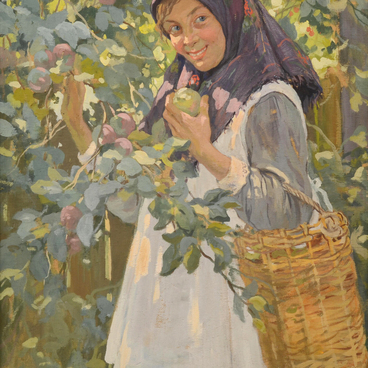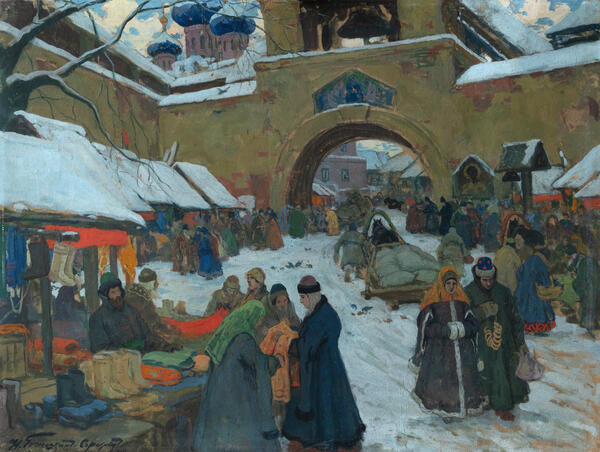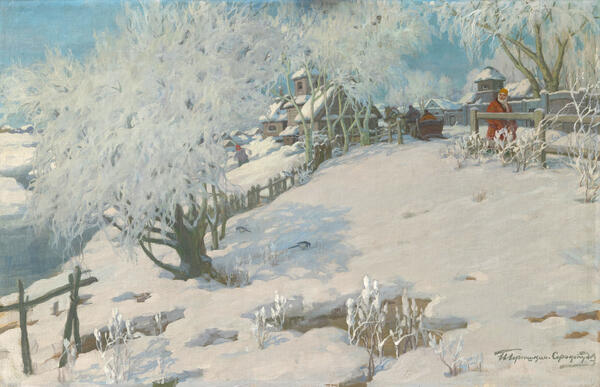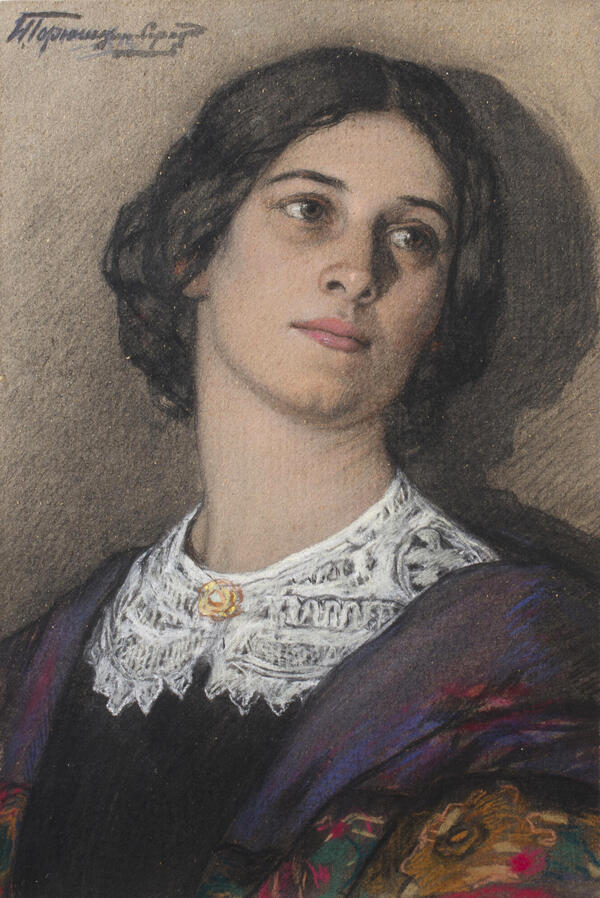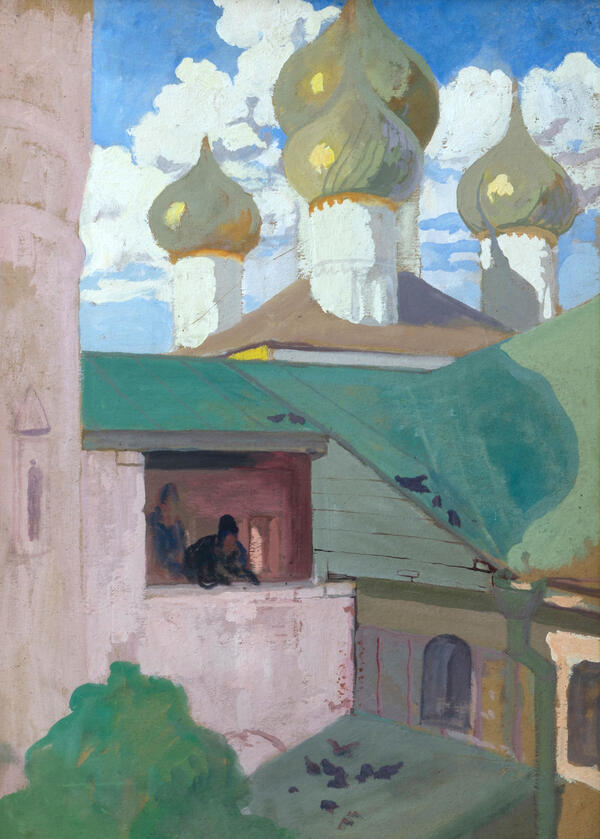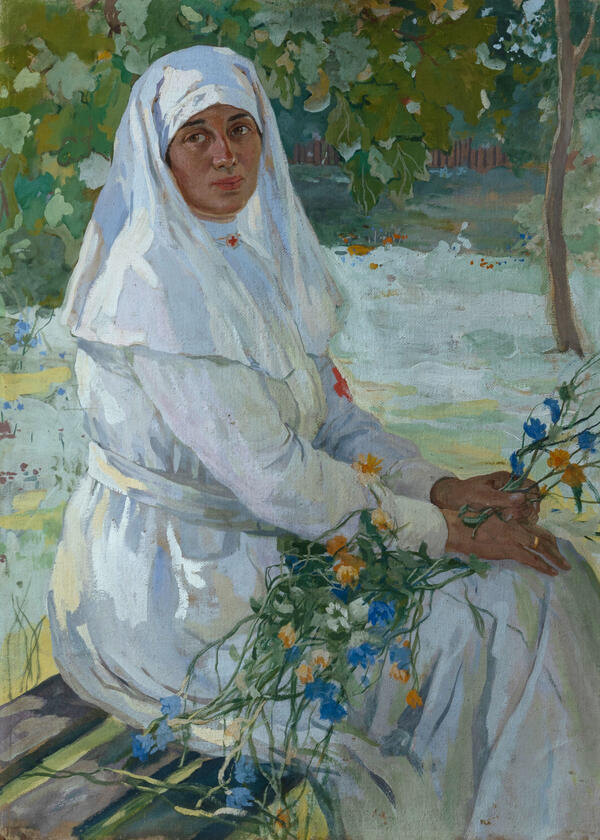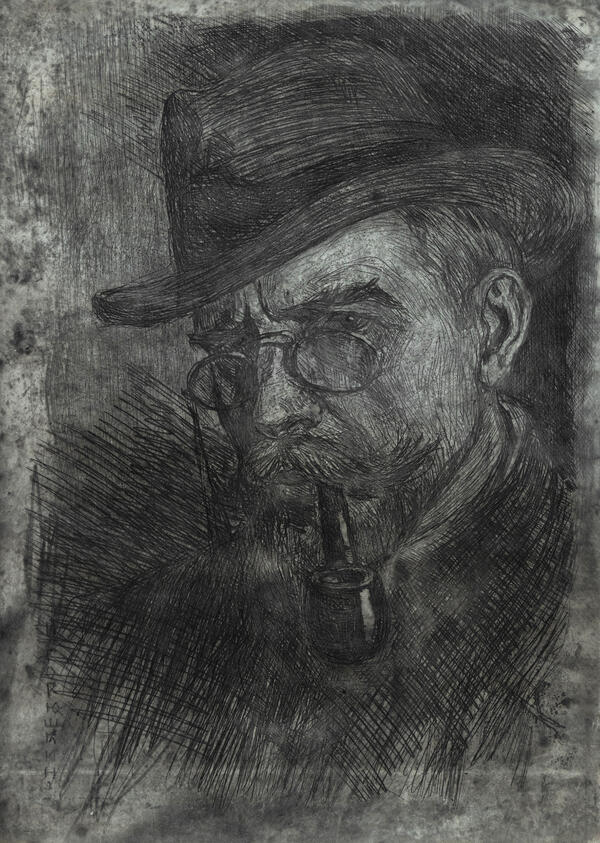In the mid-1920s and the 1930s, Ivan Silych Goryushkin-Sorokopudov created a series of historical compositions dedicated to Vladimir Ilyich Lenin. The artist spoke about this with great emotion in his diary, noting the significance of realistic art aimed at conveying the truth of life and the most significant events of our time in a true-to-life manner.
The image of Vladimir Lenin attracted the attention of painters, sculptors, and graphic artists. For more than two decades, Ivan Goryushkin-Sorokopudovhas worked hard on this topic, striving to capture in his sketches the people’s enthusiasm related to the construction of a new life. In his series, the Russian and Soviet painter explored the image of Lenin as the leader of the people, the leader of the revolution, and the tragedy associated with his death. This is demonstrated by a number of sketches of “Lenin’s funeral” by Ivan Goryushkin-Sorokopudov in the collection of the Penza Art Gallery.
In the painting “Lenin’s Speech, ” which the artist completed in the 1930s, Vladimir Lenin is depicted showing the way forward to the Red Army soldiers with a fast and excited movement. He is portrayed as an ardent and passionate speaker.
The painting has a dynamic composition. It depicts Vladimir Lenin addressing the people from the podium. His large figure stands out clearly. Lenin’s presence in the painting conveys a sense of strong-willed determination. The movement in his posture and facial expressions made him a challenging subject for the artist to capture.
Around the podium, on the snow, the artist painted people walking and riding in carriages under red banners. In the background, on the right side, he depicted technical structures conventionally. The dark blue domes of a church can be seen in the center.
In general, this series of historical compositions was associated with the artist’s desire to show the deep national character of Lenin’s ideas and his close connection with the people. The sketches, which are extremely diverse in their composition, rhythm, and color palette, show the artist’s attempt to find an independent approach to a complex subject. Although the sketches were not completed paintings, they convey the artist’s emotional excitement.

